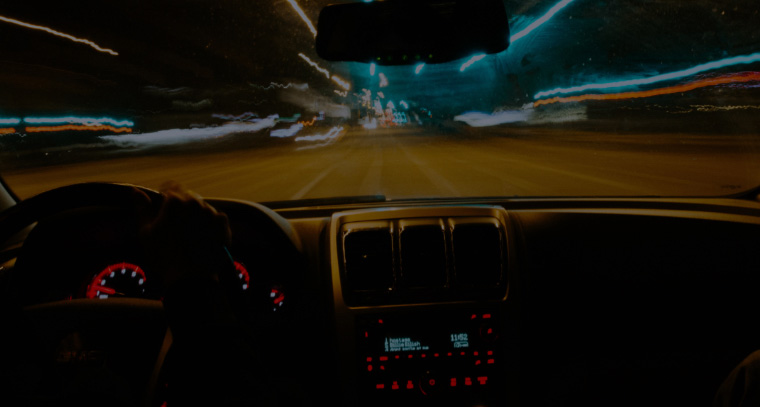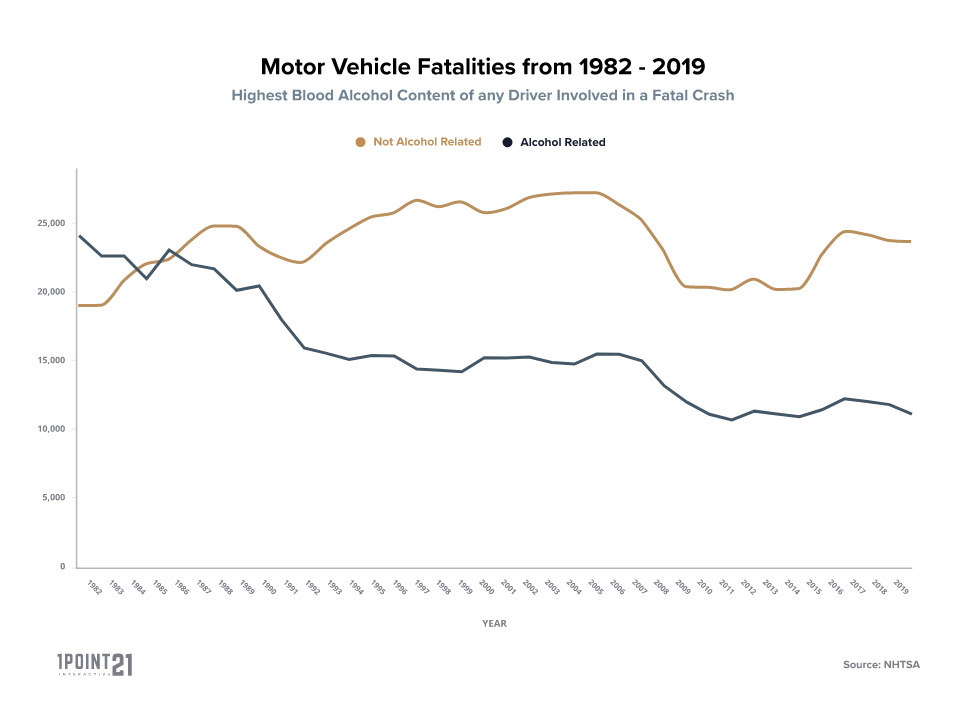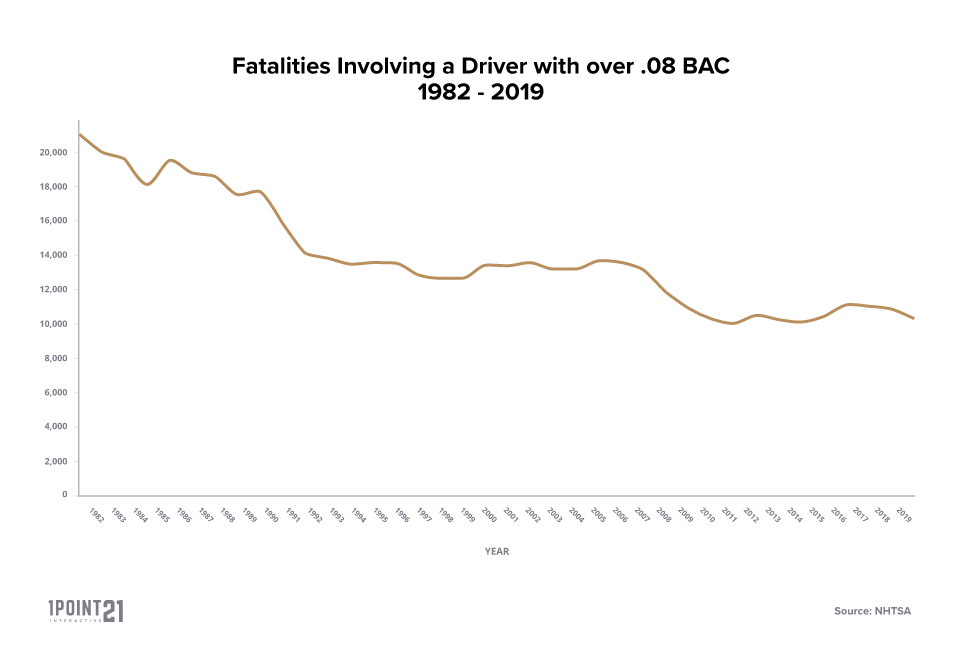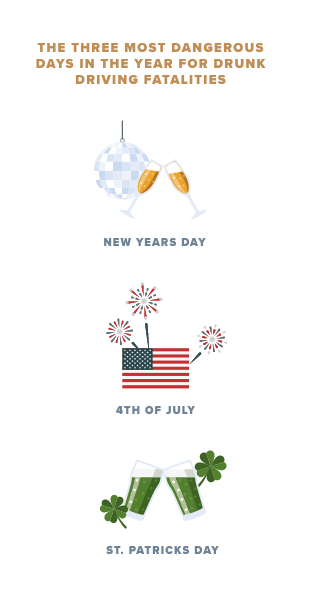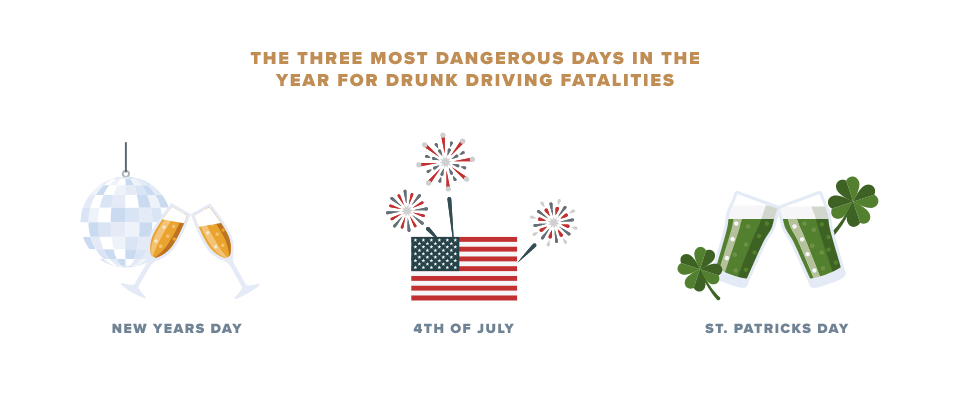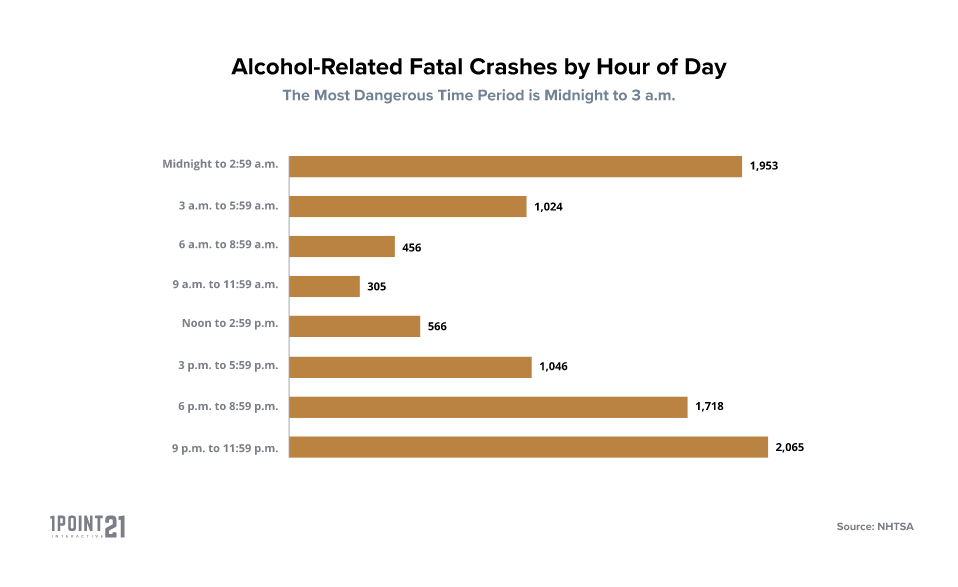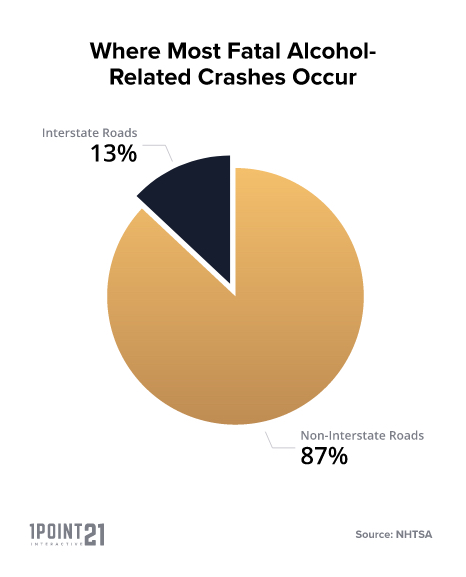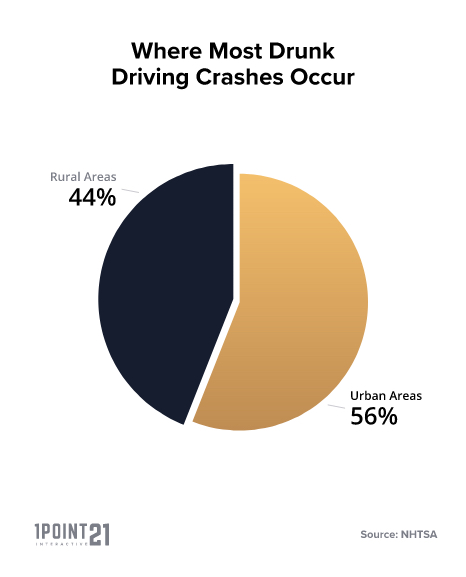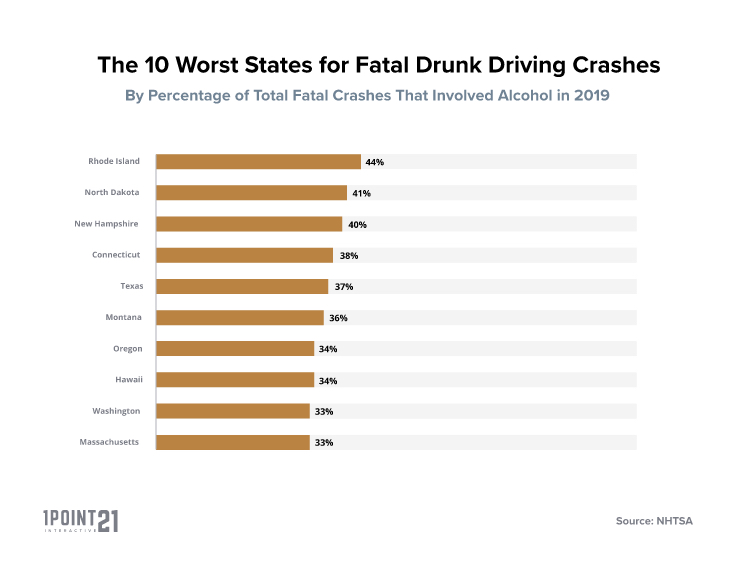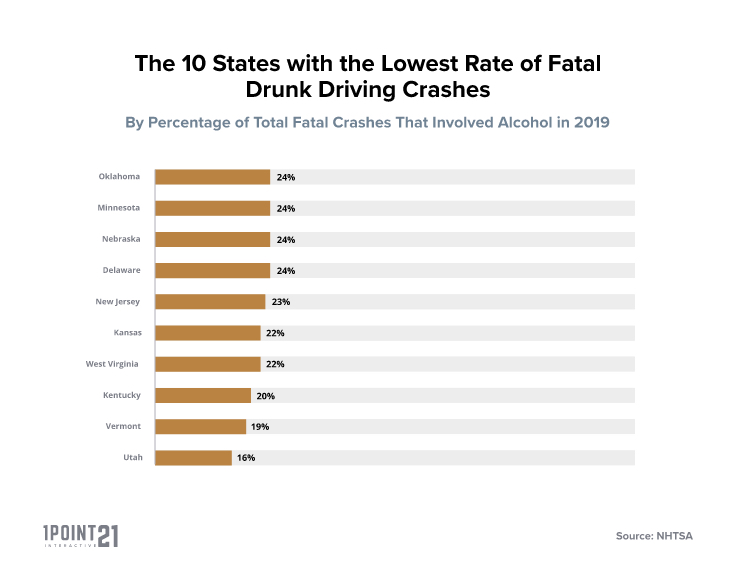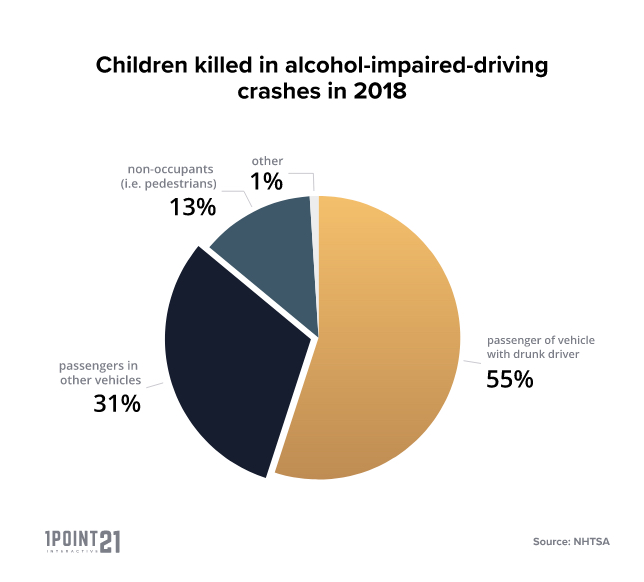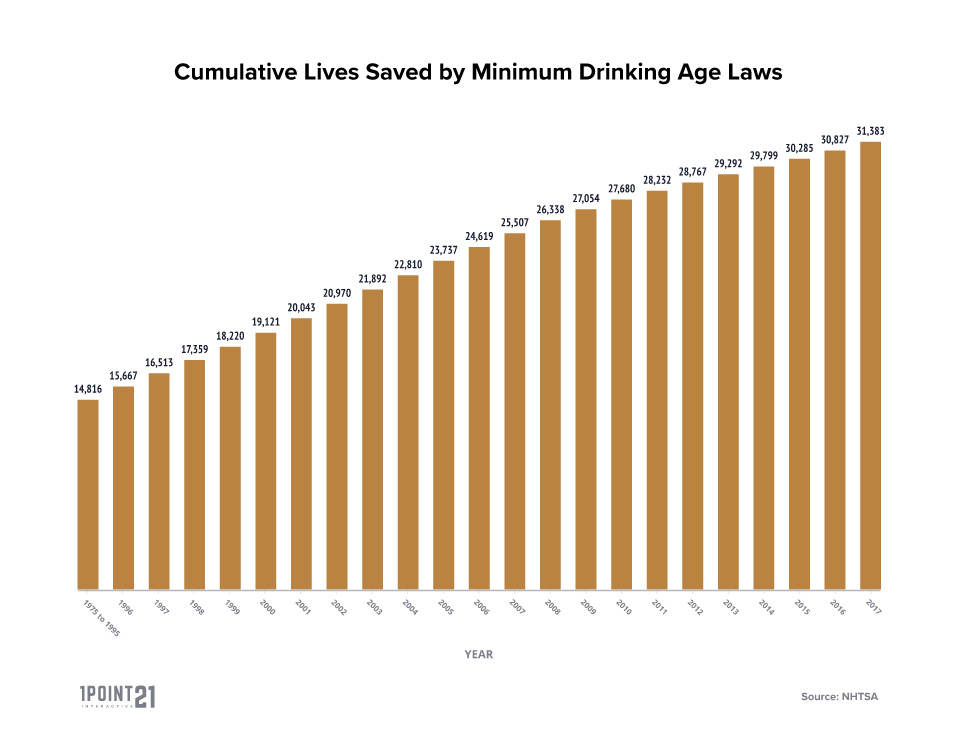In which state do drunk driving crashes occur the most?
From 2015-2019, Montana had both the highest percentage and highest rate of drunk driving fatal crashes per 100,000 people, while New York had the lowest in both. Texas is infamously known as one of the most dangerous states for drunk driving; however, drunk driving fatal crashes made up 25 percent of the total crashes, compared to Montana’s 44 percent.
Which states have the highest rate of alcohol-related fatal crashes?
From 2015-2019, these ten states had the highest percentage of alcohol-related fatal crashes. In these ten states, drunk driving fatal crashes made up one-third or more of their total crashes.
From 2015-2019, the following ten states had the highest number of fatal drunk driving crashes per 100,000 people.
- Montana – 7.28
- Wyoming – 6.25
- South Carolina – 5.72
- North Dakota – 5.59
- Louisiana – 4.76
- New Mexico – 4.56
- South Dakota – 4.30
- Delaware – 4.25
- Arkansas – 4.08
- Alabama – 4.07
Which states have the highest percentage of drunk driving fatal crashes?
From 2015-2019, these ten states had the highest percentage of alcohol-related fatal crashes. In these ten states, drunk driving fatal crashes made up one-third or more of their total crashes.
- Montana – 44 percent
- North Dakota – 42 percent
- Rhode Island – 41 percent
- Alaska – 38 percent
- South Dakota – 36 percent
- Wisconsin – 35 percent
- Vermont – 34 percent
- Maine – 34 percent
- Colorado – 33 percent
- Wyoming – 33 percent
